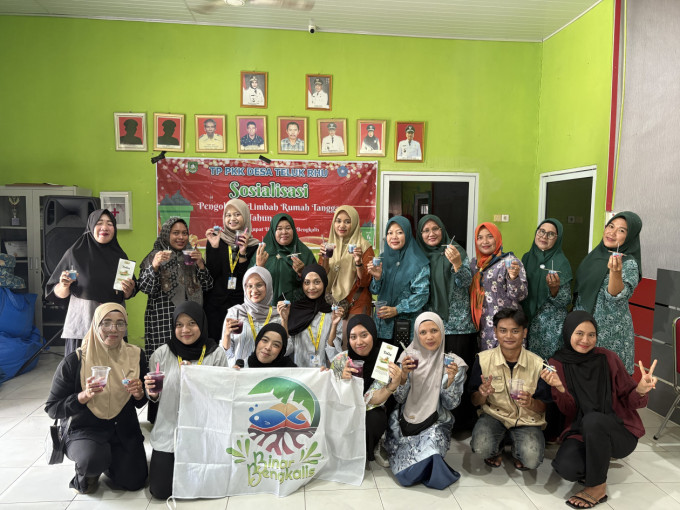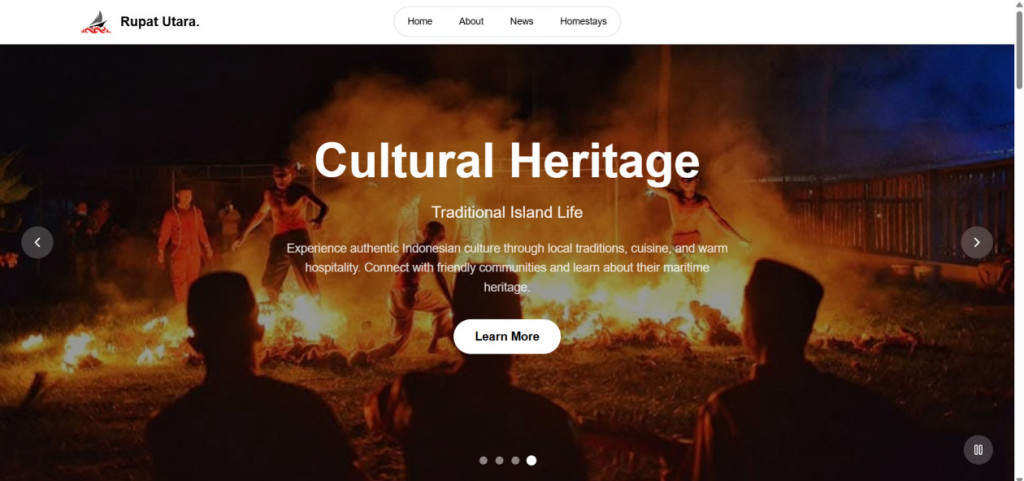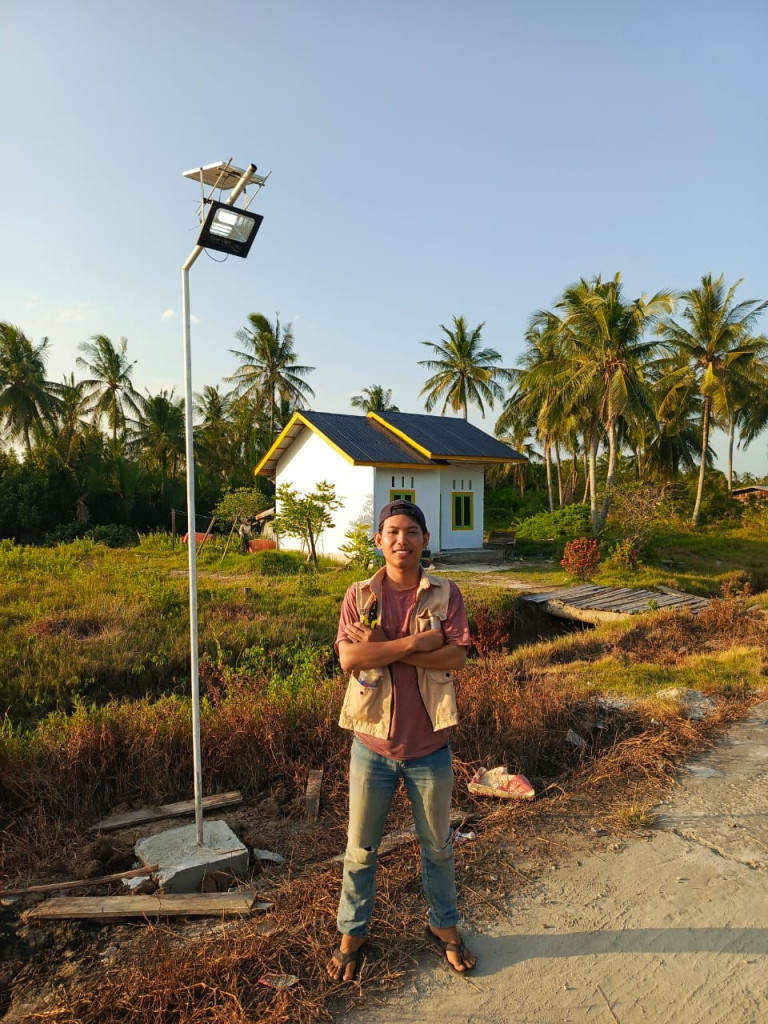
The UGM Community Service Program (KKN-PPM) Binar Bengkalis team carried out community engagement activities in Bumi Lancang Kuning, North Rupat District, Bengkalis Regency, Riau Province. This area, rich in natural and cultural potential, served as a platform for students to contribute to sustainable development based on local wisdom.
North Rupat is one of the tourist areas with great potential to become a leading destination in Riau Province. Its coastal charm, with sweeping sea views and pristine white sand, offers a tranquil natural panorama.
In addition to its natural beauty, North Rupat is also home to rich coastal traditions and cultural heritage, making it a promising destination for the development of nature- and culture-based tourism. This potential provides vast opportunities for sustainable tourism development that directly benefits the well-being of local communities.
The team coordinator, Restu Satrio Widhianto, explained that one of the programs implemented to support tourism development in North Rupat was the digitalization of local products. A village website, https://rupatutara.id, was created as an initial step to publicize and market regional potential more broadly.

“This website was the result of collaboration between UGM students and the local community as a tangible contribution to advancing the village,” said Widhianto in a written statement on Tuesday (Aug. 12).
The website also features profiles of local micro, small, and medium enterprises (MSMEs). To ensure the sustainability of local businesses, MSME actors received ongoing digital training to help them adapt to changing times. The training covered QRIS setup, e-catalog creation, and social media management as tools for product promotion.
To further develop MSMEs, the team also introduced innovations in processing local fish into shredded fish (abon) and pempek. These products utilized parang-parang and caru fish from local waters.
The shredded fish offered a distinctive savory flavor and longer shelf life, making it suitable as a household staple or souvenir. Meanwhile, pempek made from parang-parang fish had a chewy texture and delicious taste, comparable to the more common mackerel-based version.
“These products are not only a form of community creativity but also a strategic step to increase the added value of North Rupat’s fisheries,” he added.
According to Restu, developing local potential in this way can expand business opportunities, create jobs, and sustainably improve the economic capacity of villagers.
In addition, the Binar Bengkalis team supported local tourism development by mapping out the distribution of tourism sites in North Rupat. The map highlighted attractions in Tanjung Medang and Teluk Rhu villages, including both established sites and areas with potential to become new destinations with their own unique charm.
Beyond tourism, the team also introduced several environmentally friendly programs, such as waste management initiatives to reduce the volume of organic and inorganic waste. Organic waste was processed into eco-enzyme from spoiled vegetables and fruits, aromatherapy candles from used cooking oil, and organic fertilizer from livestock manure.
“These activities inspired especially local women to process household organic waste into products with economic value,” Widhianto explained.
As part of their sustainable development efforts, the KKN-PPM team also introduced renewable energy solutions by installing solar-powered streetlights in strategic locations in Tanjung Medang Village.
“Solar panels were chosen because they can convert solar energy into electricity without relying on the national grid, making them more adaptive and efficient in line with the climate and geographic conditions of Rupat Island,” he said.

Towards the end of their service, UGM students introduced the production of charcoal briquettes made from dry leaves in collaboration with Tanjung Medang villagers. This activity engaged local women, who are often at the forefront of household waste management.
“This program not only provided new knowledge but also invited participants to directly practice simple briquette-making techniques,” Widhianto said.
According to him, before this initiative, many women regarded dry leaves as waste that should be burned or discarded. They were unfamiliar with alternative, environmentally friendly, and useful ways of managing such waste. However, after participating in the workshop, their perspectives shifted.
“They began to see the economic and ecological potential of dry leaves and realized the importance of reducing open burning practices that pollute the air,” Widhianto concluded.
Author: Jelita Agustine
Editor: Gusti Grehenson
Photographs: KKN Binar Bengkalis Team

